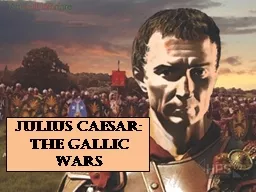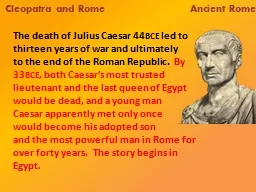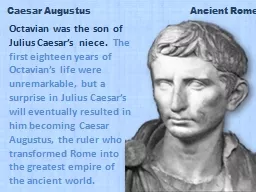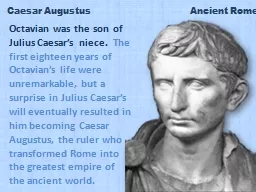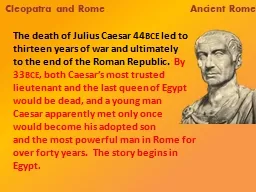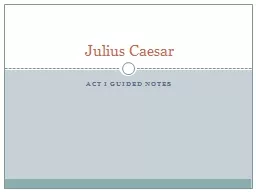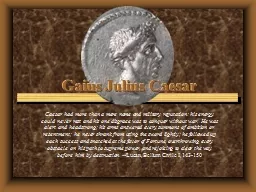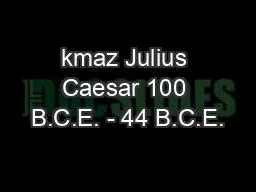PPT-Julius Caesar: The Gallic Wars
Author : cozync | Published Date : 2020-06-23
Young caesar Gaius Julius Caesar was born in 100 BC Targeted as a political opponent by dictator Lucius Cornelius Sulla Forced to go in to hiding Eventually joined
Presentation Embed Code
Download Presentation
Download Presentation The PPT/PDF document "Julius Caesar: The Gallic Wars" is the property of its rightful owner. Permission is granted to download and print the materials on this website for personal, non-commercial use only, and to display it on your personal computer provided you do not modify the materials and that you retain all copyright notices contained in the materials. By downloading content from our website, you accept the terms of this agreement.
Julius Caesar: The Gallic Wars: Transcript
Download Rules Of Document
"Julius Caesar: The Gallic Wars"The content belongs to its owner. You may download and print it for personal use, without modification, and keep all copyright notices. By downloading, you agree to these terms.
Related Documents

